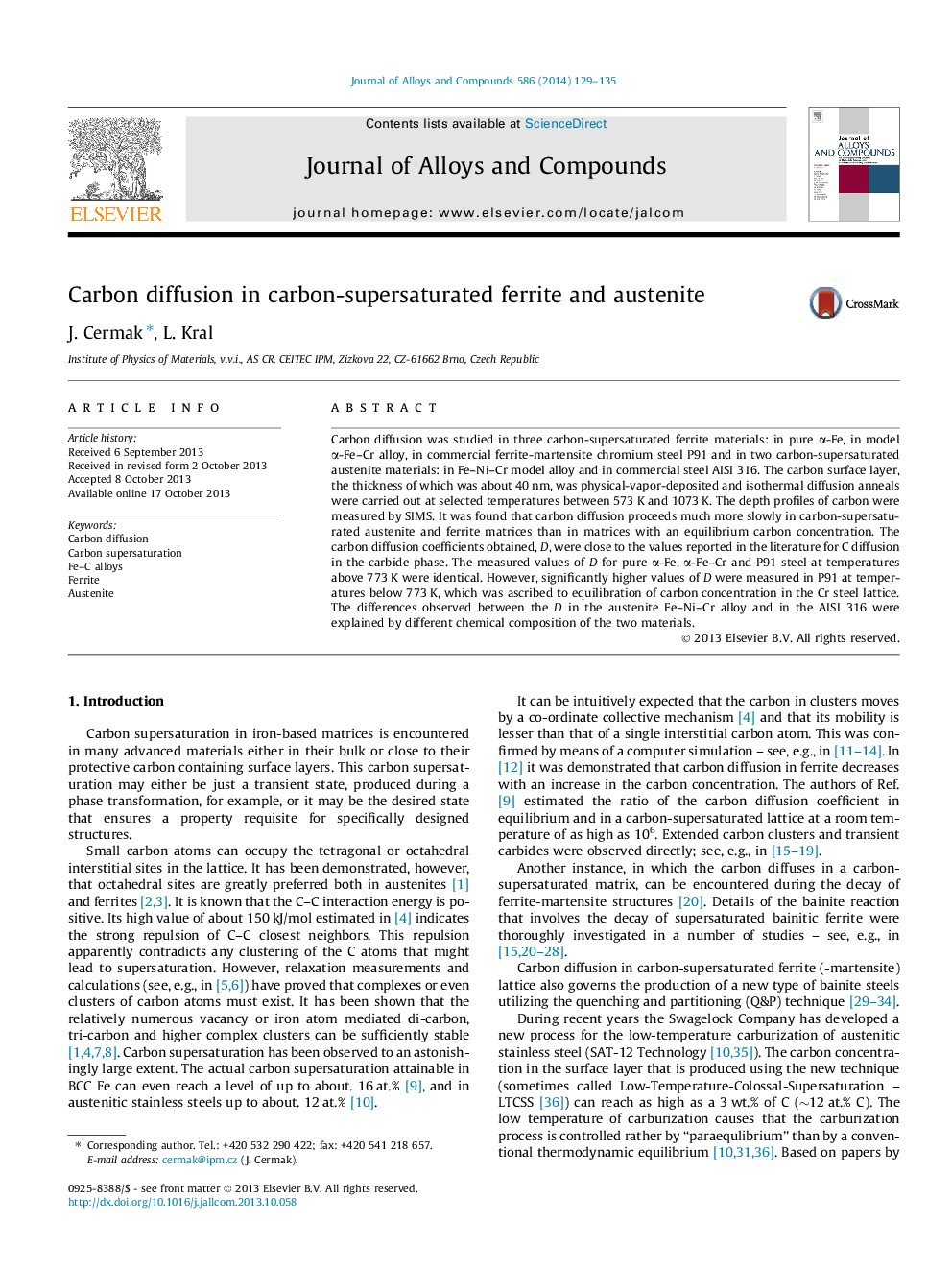| Article ID | Journal | Published Year | Pages | File Type |
|---|---|---|---|---|
| 1612625 | Journal of Alloys and Compounds | 2014 | 7 Pages |
•Carbon diffusion coefficient, D, in carbon-supersaturated lattice was measured.•Fe, Fe–Cr and P91 steel (BCC) and Fe–Ni–Cr and AISI 316 (FCC) were studied.•D’s are much lower than data reported for equilibrium carbon concentration.•Values of D are close to known data for carbon diffusivity in carbide phase.
Carbon diffusion was studied in three carbon-supersaturated ferrite materials: in pure α-Fe, in model α-Fe–Cr alloy, in commercial ferrite-martensite chromium steel P91 and in two carbon-supersaturated austenite materials: in Fe–Ni–Cr model alloy and in commercial steel AISI 316. The carbon surface layer, the thickness of which was about 40 nm, was physical-vapor-deposited and isothermal diffusion anneals were carried out at selected temperatures between 573 K and 1073 K. The depth profiles of carbon were measured by SIMS. It was found that carbon diffusion proceeds much more slowly in carbon-supersaturated austenite and ferrite matrices than in matrices with an equilibrium carbon concentration. The carbon diffusion coefficients obtained, D, were close to the values reported in the literature for C diffusion in the carbide phase. The measured values of D for pure α-Fe, α-Fe–Cr and P91 steel at temperatures above 773 K were identical. However, significantly higher values of D were measured in P91 at temperatures below 773 K, which was ascribed to equilibration of carbon concentration in the Cr steel lattice. The differences observed between the D in the austenite Fe–Ni–Cr alloy and in the AISI 316 were explained by different chemical composition of the two materials.
